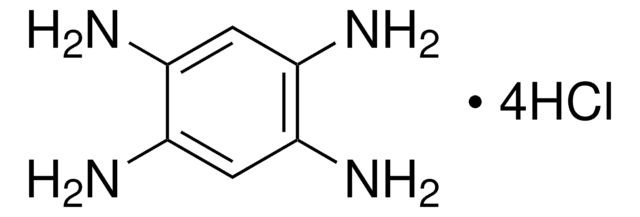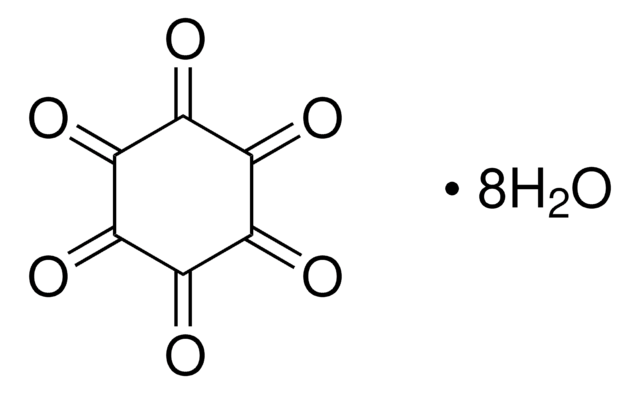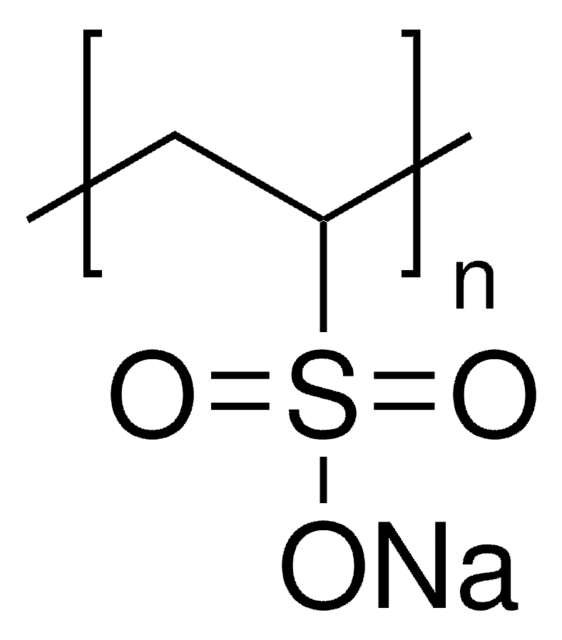792527
Imidazol
anhydrous, free-flowing, Redi-Dri™, ACS reagent, ≥99%
Sinónimos:
1,3-Diaza-2,4-ciclopentadieno, Glioxalina
About This Item
Productos recomendados
grade
ACS reagent
anhydrous
Quality Level
vapor pressure
<1 mmHg ( 20 °C)
product line
Redi-Dri™
assay
≥99%
form
solid
quality
free-flowing
impurities
≤0.2% water
ign. residue
≤0.1%
pH
9.5-11.0 (25 °C, 5% in H2O)
pKa (25 °C)
6.95
bp
256 °C (lit.)
mp
88-91 °C (lit.)
cation traces
Fe: ≤0.001%
SMILES string
c1c[nH]cn1
InChI
1S/C3H4N2/c1-2-5-3-4-1/h1-3H,(H,4,5)
InChI key
RAXXELZNTBOGNW-UHFFFAOYSA-N
¿Está buscando productos similares? Visita Guía de comparación de productos
Application
Imidazole can be used as a catalyst in the following
- Silylation of alcohols, carboxylic acids, and amines in the presence of silyl chloride in DMF.
- To prepare acid chlorides from the corresponding carboxylic acids and phosgene.
- Imidazole-PPh3/I2 catalytic system used in the conversion of alcohols into iodides.
- Imidazole-PPh3/I2 is used in the diol deoxygenation reaction.
Legal Information
signalword
Danger
hcodes
Hazard Classifications
Acute Tox. 4 Oral - Eye Dam. 1 - Repr. 1B - Skin Corr. 1C
Storage Class
6.1C - Combustible acute toxic Cat.3 / toxic compounds or compounds which causing chronic effects
wgk_germany
WGK 2
flash_point_f
293.0 °F - closed cup
flash_point_c
145 °C - closed cup
Elija entre una de las versiones más recientes:
¿Ya tiene este producto?
Encuentre la documentación para los productos que ha comprado recientemente en la Biblioteca de documentos.
Los clientes también vieron
Nuestro equipo de científicos tiene experiencia en todas las áreas de investigación: Ciencias de la vida, Ciencia de los materiales, Síntesis química, Cromatografía, Analítica y muchas otras.
Póngase en contacto con el Servicio técnico![Dipyrazino[2,3-f:2′,3′-h]quinoxaline-2,3,6,7,10,11-hexacarbonitrile 95% (HPLC)](/deepweb/assets/sigmaaldrich/product/structures/151/558/c0e2c95f-5228-4864-a7a5-4b9765a19840/640/c0e2c95f-5228-4864-a7a5-4b9765a19840.png)








